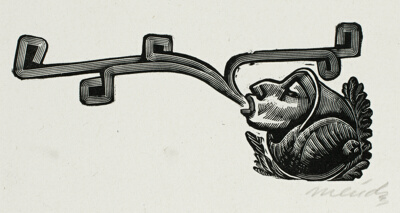Industry News
BIS Publishes Report on Export Violations
TweetJul. 8, 2024
By:
Marvin E. McPherson

The Bureau of Industry and Security (BIS) has released a new edition of its publication “Don't Let This Happen to You!”. The reports serves as an important message from BIS to exporters, providing real-world examples of export control violations and their consequences.
The report focused on three main areas which include export compliance guidance; export violations destined to China, Russia, Iran and other countries; and anti-boycott violations.
The export compliance guidance emphasized the eight principals effective export compliance program which include
- Strong and continuous management commitment
- Conduct frequent risk assessments and corrective action
- Written policies and procedures regarding jurisdiction, classification, licensing and screening
- Recordkeeping
- Training
- Internal controls and audits
- Written policies and procedures relating to contractive actions
- Update controls and classifications
Provided that companies incorporate the eight principals within their compliance program, BIS is likely to find that as a mitigating factor in the event of a violation.
The export violation examples detailed various scenarios where companies and individuals have violated the EAR and outlined the consequences. To recap, the highlighted violations related to the below items and technology.
- Biological research vials
- Camera detectors and accessories, liquid nitrogen plant, and computer simulation software
- Cesium atomic clocks
- Classified national defense information
- Coating services for military aircraft components
- Combat rubber raiding craft (CCRC)
- Computer simulation software
- Counterfeit integrated circuits
- Face respirators
- FLIR thermal imaging camera
- Forensic hardware and software
- Hard disk drives (HDDs)
- Integrated circuits with military applications
- Marine buoyancy technology
- Metal alloy powder
- Military helmet components
- Multi-fuel engines
- Oilfield equipment, including coiled tubing and pump sets
- Photoresist chemicals
- Power amplifiers
- Radiation-hardened 16mB SRAM silicon wafers
- Radiation-hardened integrated circuits (RHICs)
- Riflescopes
- Submarine rescue system technology
- Telecommunications equipment
- Telecommunications networking equipment
- Trade secrets related to Surface Acoustic Wave (SAW), Bulk Acoustic Wave (BAW), and Film Bulk Acoustic Resonators (FBAR) technology
- Trade secrets related to syntactic foam
- Traveling wave tubes (TWTs) for satellite communications
The below ECCNs (Export Control Classification Numbers) are associated with the items involved in the violations.
|
Category 0 |
||
|
0A987 |
||
|
Category 1 |
||
|
1A004 |
1A613 |
1C002 |
|
1C210 |
1D002 |
|
|
Category 2 |
||
|
2B001 |
||
|
Category 3 |
||
|
3A001 |
3A002 |
3A611 |
|
3A992 |
3B992 |
3E991 |
|
Category 5 |
||
|
5D992 |
||
|
Category 6 |
||
|
6A003 |
||
|
Category 8 |
||
|
8A992 |
8E001 |
|
|
Category 9 |
||
|
9A515 |
9E515 |
|
The report demonstrates the depth and breadth of BIS’s jurisdiction over dual-use items controlled by the EAR. It also warns exporters to continuously review current and future transactions for changes in the law or controls.
While export violations are generally civil in nature, the report demonstrates that the EAR encompasses criminal statutes in which persons can be held criminally liable for conduct undergone in contrary to U.S laws. It’s important to remain up to date with U.S export laws as well as conducting regular reviews and audits of your compliance program. If you suspect an export or sanctions violation, a violation has occurred, or you need help with compliance reviews, please contact any attorney at Barnes Richardson and Colburn.
